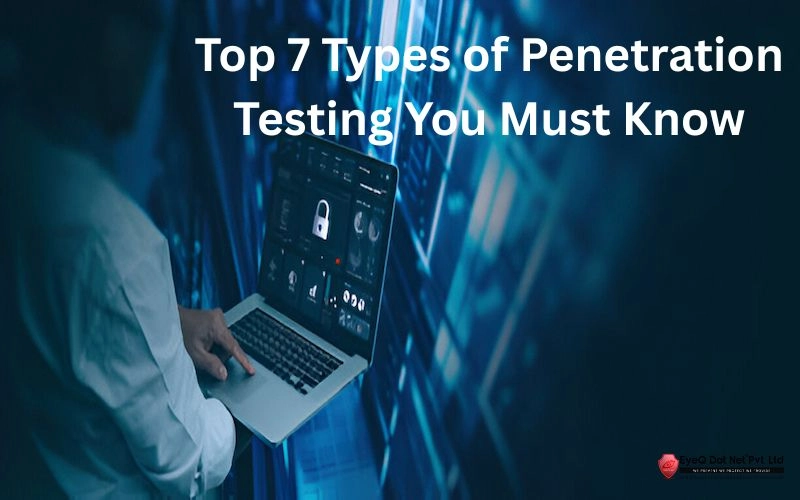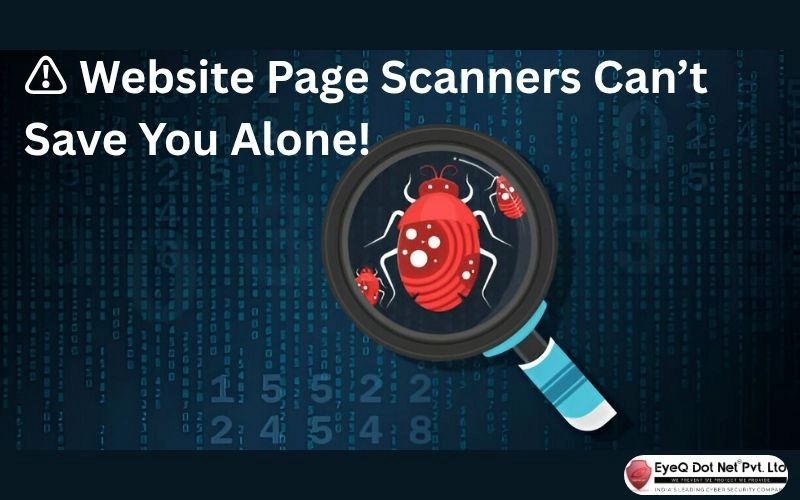A Beginner’s Guide to the 7 Main Types of Penetration Testing
In today’s connected world, keeping your personal data safe is no longer optional — it’s essential. Penetration testing is one of the best mechanisms that can be used in ensuring that your digital systems are secure. Essential types of penetration testing resemble real-life cyberattacks and discover the existing weaknesses to address them before the hackers can abuse them. Whether it is an attack on your network or social engineering, the vulnerability remains in one particular form of your system to make the larger piece secure.
If you’re wondering what the main types of penetration testing are and how they protect your digital assets, this blog will break it down in simple, easy-to-understand language. Whether you’re a small business owner balancing countless responsibilities, a cybersecurity buff curious to learn more, or simply someone who wants peace of mind online, this guide is made just for you.
Here are the 7 types of Penetration Testing
1. Network Penetration Testing
This is one of the most widely used types of penetration testing.Network penetration testing helps you uncover and fix weak spots in both your internal and external networks before attackers can exploit them. The goal is to uncover security loopholes that hackers could exploit—such as open ports, firewall misconfigurations, or outdated software.
External network testing targets internet-facing systems like web servers and VPNs, while internal network testing simulates an attack from someone who already has access to the network—like a disgruntled employee.
Why it matters:
- Detects weak spots in your firewall and router before attackers do.
- Detects unauthorized access points
- Ensures secure configuration of servers and devices
2. Web Application Penetration Testing
Web apps are frequently used as the entry of your company. These systems are popular, which also makes them a favorite target for cybercriminals.
This is a category of penetration testing that is based on web-related protocols, on the one hand, it identifies web-based security risks such as SQL injection, cross-site scripting (XSS) and session hijacking.
Whether it’s an e-commerce platform, a login portal, or a blog with a contact form, web apps must be tested regularly.
Why it matters:
- Prevents data breaches caused by insecure code
- Enhances the overall application security
- Ensures secure user input validation
3. Wireless Penetration Testing
The purpose of wireless penetration testing is to check the security of the wireless networks and network devices including routers, access points as well as IoT devices. Testers try to break weak encryption, spot unknown devices, or find unsafe settings.
This is especially important in office environments where multiple devices connect to the same Wi-Fi network.
Why it matters:
- Prevents unauthorized network access
- Identifies rogue access points
- Ensures secure wireless communication
4. Social Engineering Penetration Testing
Not all cyberattacks come through code. It’s about using human emotions—like fear or urgency—to get access to sensitive data. This test evaluates how well your employees handle phishing emails, suspicious phone calls, or fake tech support interactions.
This is a unique but essential type of penetration testing that uncovers vulnerabilities in the human layer of security.
Why it matters:
- Raises employee awareness about security threats
- Prevents data leaks from manipulation
- Tests the effectiveness of security training programs
5. Physical Penetration Testing
This test checks whether an attacker can physically access your premises and potentially steal or damage hardware, access internal systems, or plug in malicious devices like keyloggers.
Testers can attempt to engage in possible tailgating, lock picking or trespassing into places that they are not supposed to enter to determine the level of security that you have put in place physically.
Why it matters:
- Prevents unauthorized entry to sensitive areas
- Highlights weaknesses in security personnel and systems
- Complements digital security strategies
6. Cloud Penetration Testing
As more businesses move to the cloud, ensuring the safety of cloud-based services and infrastructure is critical. Cloud penetration testing checks for weaknesses in services like AWS, Azure, and Google Cloud.
The test measures access restrictions, data storage, encryption and improperly set-up permissions.
Why it matters:
- Protects sensitive cloud-stored data
- Identifies misconfigured cloud services
- Helps maintain compliance with data protection regulations
7. Mobile Application Penetration Testing
With smartphones playing a central role in business and personal life, mobile apps have become prime targets for hackers. This test looks for security problems in apps on iPhones and Android phones.
It evaluates problems such as the insecure storage of data, erroneous session management and poor encryption.
Why it matters:
- Ensures secure user authentication and data protection
- Builds user trust by improving app reliability
- Detects malware injection or malicious code
Why Understanding the Different Types of Penetration Testing Matters
Each system, application, or access point in your digital ecosystem is a potential target for cybercriminals. Knowing the various types of penetration testing allows businesses and individuals to create a layered defense strategy. By regularly testing your network, apps, employees, and infrastructure, you reduce the chances of falling victim to a cyberattack.
Choosing the Right Test for Your Needs, When deciding which types of pen testing to implement, consider the following:
- Business size: Small businesses may start with network and web application testing, while larger companies may need full-scale testing.
- Compliance needs: Some industries (like healthcare or finance) require specific tests for regulatory compliance.
- Technology stack: Cloud-based businesses should prioritize cloud and web app testing. Retailers using mobile apps should focus on mobile app pentesting.
Final Thoughts
Cybersecurity is not a one-size-fits-all approach. Each organization has different needs and vulnerabilities. Understanding the types of penetration testing is your first step toward a secure digital environment.
Each test is necessary, whether web and network testing, social engineering, and cloud security. Be careful, be aware and do this before a cyberattack reveals your vulnerability.
If you’re serious about protecting your business or personal data, it’s time to consider professional penetration testing services. Stay safe, stay ahead.



